
Search
The Renewable Energy site for Do-It-Yourselfers
Some More Screen
Absorber Tests for Solar Air Heating Collectors
Effects of
Stagnation Temperatures on a Collector with Fiberglass Screen Absorber
We had a fully sunny day today -- one
of not very many this winter.
The two test solar air heating
collectors were in their collection positions facing roughly south at a tilt
angle of about 70 degrees. The fans were not hooked up, but the ducts
leading into the shop were open on the shop end, so there was just a little
thermosyphoning going on - but not much.
I noticed when I walked into the shop
a sort of burning plastic smell. On closer look it the smell was coming
from the air collector ducts that lead into the shop. It was pretty strong
when you got right near the ducts.
I went out to look at the collectors,
and its very apparent that some deposits have been left on the inside of the
glazing. I assume these are from the screen that was reaching near
stagnation temperatures and out gassing stuff that then condensed on the glazing
as a sort of scummy coating.
Here are some pictures of it -- click
for full size
I took the glazing off of one of the
two collectors, and the material is liquidy and wipes away with a finger easily.
It is spread over nearly all of the inside surface of the glazing.
There is no apparent degradation of
the screen itself, but it has only been exposed to this a few days.
My guess is that the odor and residue
is coming from the black plastic coating that is applied over the fiberglass
strands, as it seems like the FG should be fine at high temperatures.
On the 2nd collector, I installed a
thermometer about a foot from the top of the collector, and with the probe going
in just behind the first of three layers od screen.
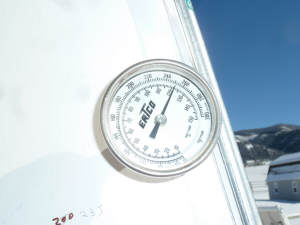
Temperature gage -- near stagnation. |
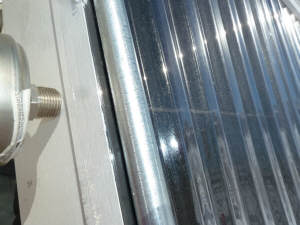
Probe on the temp gage extends about a
foot into the collector just under the layer of
screen closest to the glazing. |
When the end of the duct in the
garage was open and the collector could thermosyphon just a bit, the maximum
temperature was 235, and when the duct in the garage was shut off completely for
full stagnation, the temperature went up to 255F. This is with a 28F
ambient with a bit of breeze.
This was with a temp of about 28F out
-- in the summer, the outside temp could easily be 60F higher, which would raise
the inside temp as well.
I had come around to the point where
I thought that the fiberglass screen was the way to go as its nice to handle,
cheaper, and it blocks a little more sun than the aluminum, but I am now
thinking that the aluminum is a safer long term bet? Even it it holds up
OK over time, I don't much like the idea of breathing the fumes from whatever is
happening to the plastic?
Anyone have any thoughts on this?
Screen at 45
Degree Incidence Angle
This is the test Doug suggested with
the screen held so that the sun is not coming straight into the screen -- which
would be more typical of most of the day.
I just did an eyeball at a 45 degree
angle.
I first did the sun straight on test,
then did the eyeball 45 degree angle.
The 2 layers of screen with the sun
straight on dropped pyranometer reading from 1053 w/sm down to 530.5 w/sm,
or 0.503 absorption.
The 2 layers of screen with the sun
making a 45 degree incidence angle with the screen was 1050.5 down to 466, or
0.445 absorption.
so, the screen does absorb somewhat
more light -- about a 12% increase in absorption -- not as much as I would have
expected, but significant.
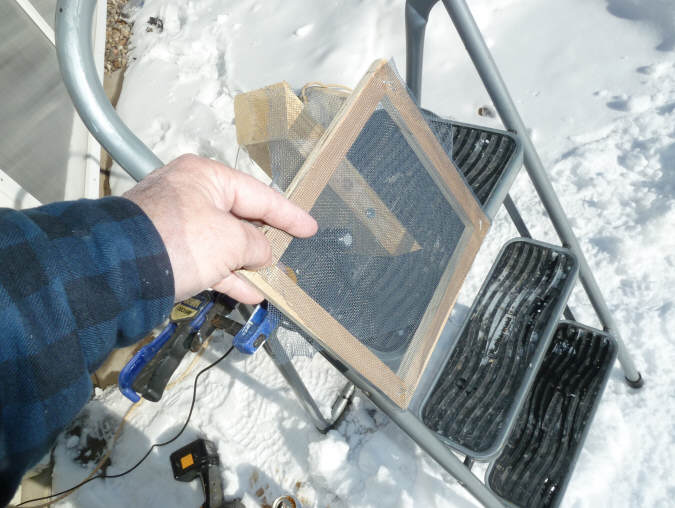
Setup for 45 degree incidence angle test -- this looks like the 90 deg one that
was done first.
Layers of
Screen Turned at 45 Degrees to Each Other
Can't remember who suggested this,
but the idea was to use two layers of screen, but instead of running both layers
so that all the wires were in the vertical and horizontal directions, rotate one
of the layers so that its wires were running diagonally.
So, starting with the frame that had
two layers of aluminum screen on it, I pulled off the layers on one side,
rotated it 90 degrees and stapled it back into place.
2 layers of screen with wires in both
layers running vertical and horizontal -- dropped pyranometer reading from 1053
w/sm down to 530.5 w/sm, or 0.503 absorption.
2 layers of screen with wires running
diagonally in 2nd layer -- dropped pyranometer reading from 1048.6 dwon to 510
w/sm, or 0.486 absorption.
Only about a 3% difference in
absorption.
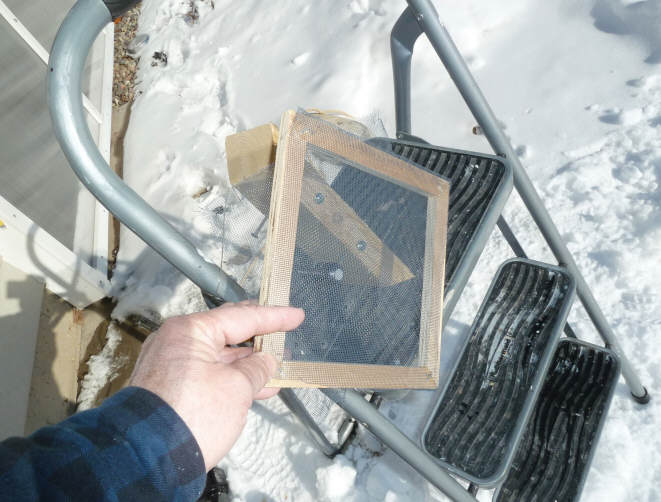
Not a great picture, but you can see
the back layer of screen has been rotated 45 degrees from the front layer.
logger plot for the new two screen
tests
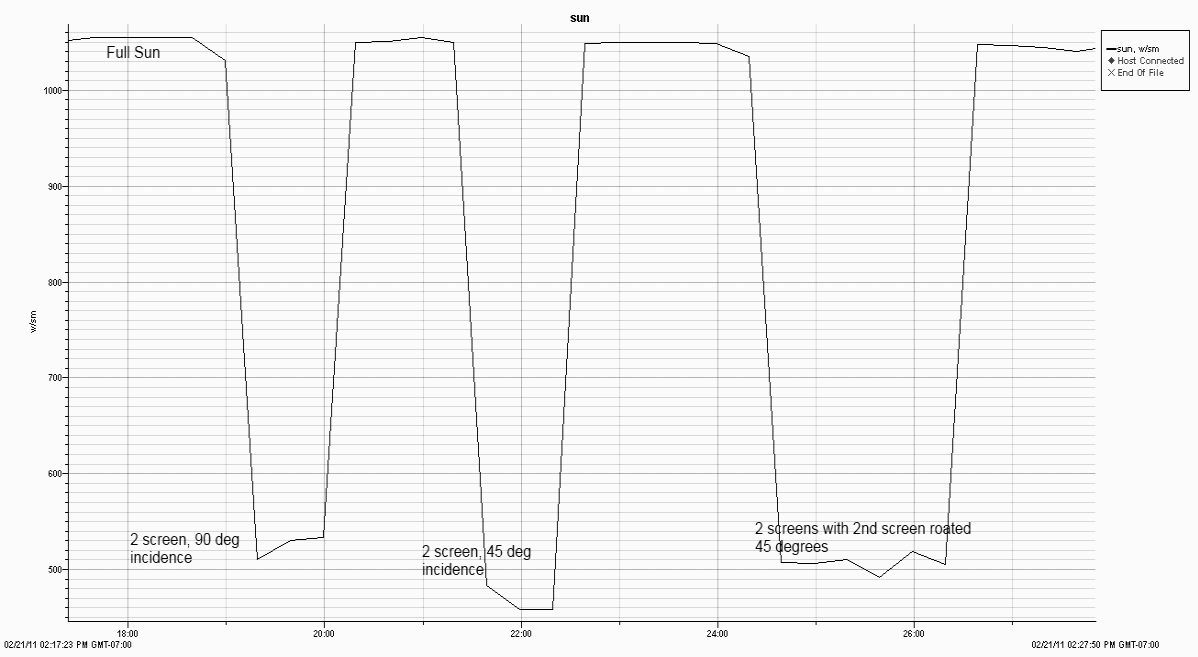
Gary February 21, 2011


